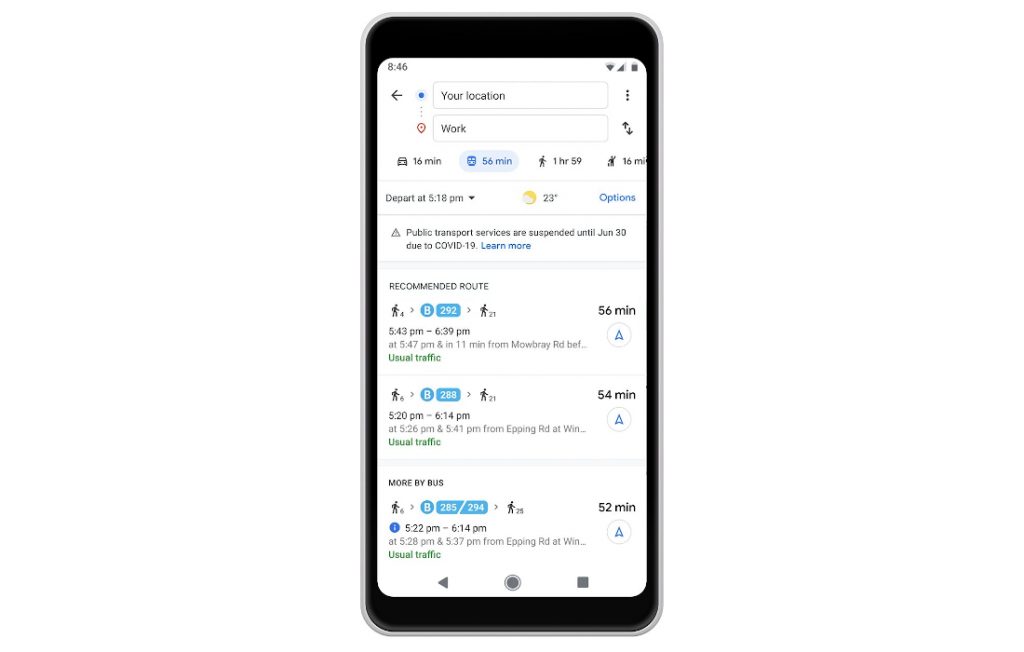

Around the world lockdowns restrictions are beginning to being lifted and in many countries, people have started to go back to work. To help people stay safe during transit, Google Maps is rolling out new features and tools that will provide them with more information and alerts during their transit.


Public transit specifically is quite risky and Governments around the world have introduced rules when using them to get around. Google will begin showing these transit alerts to users once they receive this information from local transit agencies. Google will be rolling this out in Argentina, Australia, Belgium, Brazil, Colombia, France, India, Mexico, Netherlands, Spain, Thailand, United Kingdom and the U.S.


For users in Canada, Mexico and the U.S., Google will begin showing driving alerts like for those users who are travelling across national borders. These alerts will include COVID-19 checkpoints and restrictions along the route, and it will show on the directions screen and after starting the navigation.
The next helpful feature that Google Maps is rolling out is alerts for verify eligibility and facility guidelines when travelling to medical facilities or COVID-19 testing centres. Alerts for medical facilities will be available in Indonesia, Israel, the Philippines, South Korea, and the U.S., and testing centre alerts will be available in the U.S.
In February, Google had introduced new features and insights for the crowdedness predictions for public transit in Maps. This includes information like temperature, accessibility and security onboard, designated women’s sections. They are now rolling it out globally along wheelchair accessibility information.
And lastly, Google will begin showing information like how busy is a transit station in real time, or how busy a transit station will be during a particular time period based on historical data. This can help consumers plan their trips accordingly to prevent travelling during times of increased transmission risk.
